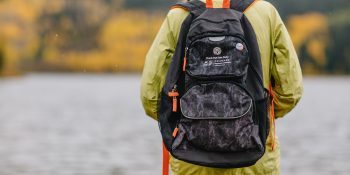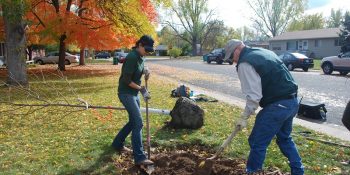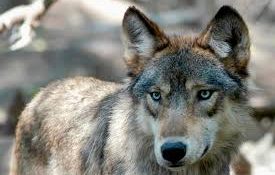FORT COLLINS, Colo. – Spring is an ideal time to plant trees in Colorado, when new trees have the best chance of getting established. It is also the time of year Coloradans celebrate Arbor Day and recognize the importance of trees in their communities.
With Colorado Arbor Day this Friday, April 16 and National Arbor Day on Friday, April 30, the Colorado State Forest Service is encouraging residents and communities to plant and celebrate trees.
“Trees in our communities provide many benefits to residents, such as shade, lower energy costs, natural beauty and color, cleaner air and water, habitat for birds and critters, and much more,” said Dana Coelho, Urban and Community Forestry Program Manager for the CSFS. “When you plant a tree, you are planting for the future. When you care for your new tree, you are ensuring these benefits come to fruition and persist. That is what Arbor Day is all about – hope for the future – so get out there, celebrate trees in your community, and plant a tree where you live, work, learn or play.”
Aside from planting at this great time of year, Coloradans should be sure they are planting the right tree species for the right location. Trees stand a much better chance of survival when the location, topography, climate, soil and the tree’s eventual height and canopy spread are considered, Coelho said. In addition, residents should select and plant trees adapted to the environmental conditions where they live in the state, so newly planted trees are tolerant to drought, extreme temperatures and other factors.
“Careful planning is necessary when selecting a tree to plant. Trees are a long-term investment – many trees will outlive the person who planted them,” Coelho said. “It is also important to plant a variety of trees in our communities. A diversity of trees will increase the resiliency of a community’s forest, so it remains healthy even if an insect, like the emerald ash borer, attacks a particular species or genus of tree.”
Tree-Planting Tips
The following tips are for trees suited for communities and urban settings. They apply to large container or balled-and-burlap trees. For tips on planting seedling trees suited for wildland forests, please visit the CSFS Seedling Tree Nursery.
Also, remember to call 811 a few business days before digging to request the approximate location of buried utilities so you don’t unintentionally dig into an underground utility line.
- Dig a hole 2-3 times the diameter of the root ball of the tree being planted and no deeper than the root ball. Use a shovel to measure the depth of your planting hole. When planted, the top of the root ball should be slightly above ground level. The root collar (flare) must be visible 1 inch above final grade after planting; trees planted too deep will drown.
- For balled-and-burlap trees, remove the bottom portion of the wire basket. Slowly place the tree in the premeasured hole, being careful not to fracture the root ball. Remove the rest of the wire basket. Remove any remaining wire and twine, then peel back and remove as much of the burlap as possible. For large container trees, completely remove the container. It is important to remove the entire wire basket or container, as these materials can damage root development.
- Set the root ball on solid ground in the hole and not on loose backfill; this eliminates settling.
- After the root ball is in the hole, check to confirm that the root flare (the flare where the trunk meets the root) is visible. You may have to pull back some of the dirt from the root ball.
- Backfill the hole with the original soil. Adding peat moss, manure or fertilizer to the soil in the planting hole is not necessary and not recommended. Too much added nutrients can cause a “potted tree” effect and restrict root growth.
- Place mulch 3-4 inches deep and at least as wide as the planting hole, but do not mulch within 3-6 inches from the trunk of the tree. This will protect roots, hold soil moisture, reduce weed growth and provide a protective strip to eliminate mechanical damage from lawnmowers and weed-eaters. Porous landscape cloth may be placed between the soil and the mulch, but do not use plastic and do not bury the root flare. Keep grass and weeds out of mulched areas as they compete for the same water and nutrient resources as the new tree.
- If necessary, stake the tree to keep the root ball from shifting in strong winds. The main tree stem must be able to sway. If it is too rigid, root and stem growth will be adversely affected.
- Use wide straps to tie trees to stakes. Do not use wire, string, rope or rubber hose around a tree. These structures can girdle or “strangle” a growing tree.
- Remove stakes and straps after roots are established, usually after one or two growing seasons.
- Keep soil moist but not saturated. Irrigation is necessary, especially during the heat of summer (water in the early morning or at dusk) and in dry winters (take care not to freeze your pipes).
Optimal periods for planting trees in Colorado are spring (March 15 to June 15) and fall (Sept. 1 to Oct. 15), when outdoor temperatures are not so extreme.
SPREAD THE NEWS
COMMENT, Like, Follow & SHARE @I70Scout






